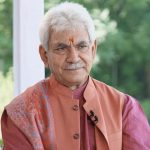Humsafar is a beautiful Urdu word that is often used in literature and poetry to refer to a “life companion” or a “life partner”. It carries the essence of someone who walks life’s path with you, sharing joys, sorrows, and experiences. The literal translation of humsafar is “fellow traveller” or “companion,” but its deeper meaning conveys a sense of intimacy, support, and companionship in many facets of life, especially in the context of a romantic relationship or marriage.
The ideal humsafar can vary based on individual preferences and values. However, there are certain common traits that people find appealing in humsafar. Humsafar should be trustworthy and reliable. Trust forms the foundation of a strong and enduring relationship. A supportive humsafar should encourage you to pursue your goals, dreams and aspirations, supports personal growth and stands by you during challenges.
Humsafar should listen intently, discusses openly and express one’s thoughts and feelings honestly. Because the effective communication is key to any long-lasting relationship. Empathy allows partners to understand and share each other’s feelings. A compassionate humsafar empathizes with your emotions, offers consolation, and seeks to understand your perspective. It isnecessary to align on core beliefs such as family, ethics, and priorities which creates a strong sense of unity and purpose.In addition to this,humsafar should respect your boundaries, opinions, and individuality, in the same way as you should respect theirs.
Life is full of changes, and a partner who is flexible and adaptable can deal with challenges together with resilience and positivity. Loving and caring atmosphere is created when there is kindness and compassion towards each other in the relationship. A little gesture of generosity and thoughtfulness go a long way in building up the bond. However, it is not necessary; having common interests or hobbies can strengthen the quality of time spent together and enhance the emotional attachment.
In the dance of life, women frequently find themselves spinning happy stories for those around them. They are taught the art of making the humsafar happy. However, there are moments when this complex dance causes them to forget about their own vibrant colours and individual tales that are just waiting to be shared.They learn to navigate the relationship stages like a professional actor, carrying the burden of sacrifices they make to win his approval. They put on the masks of compliance, hiding away their true desires, passions, their unspoken dreams, for the fear that they may upset the balance of his satisfaction.
Amidst the silent whispers of societal/cultural expectations, their own wishes or desires often go unheard. They suppress the flame of ambition, the thirst for recognition, and the need for self-expression, burying them deep within to maintain the facade of harmony. Each sacrifice chips away at the mosaic of their self-esteem, leaving behind bits of unmet goals and muffled voices. They measure their value by the smiles theyput on other people’s faces, while ignoring the masterpiece of their own pleasure that is waiting to be created.
Ahmad Faraz once stated:
na-manzilon-ko-na-ham-rahguzar-ko-dekhte-hain
ajab safar hai ki bas ham-safar ko dekhtehain
What if the sacrifices they make are met with less emotional reciprocity? The weight of unappreciated efforts and unmet emotional demands can be a heavy burden to bear. They question the validity of their sacrifices, wondering if they are valued, respected or returned in the same way.
In the ballad of relationships, emotional intelligence (ability to understand, perceive, and manage one’s emotions as well the emotions of others) orchestrates an emotional symphony, intervening threads of empathy and understanding. It harmonises feelings, actions and ideas, producing resonance between the hearts, similar to the notes of a tune.
Emotional intelligence paints words with honesty, resulting in interactions that resonate deeply. Each word becomes a brushstroke, exposing weaknesses, dreams, and anxieties—a canvas on which hearts find comfort in shared melodies. In the garden of empathy, emotional intelligence blooms exquisite flowers of kindness and compassion.It whispers understanding across silences, sowing seeds of connection that grow in the fertile soil of mutual respect, compassion and love.
Amidst the dance of conflicts, emotional intelligence guides partners through gentle stages towards resolution. It tempers flames of discord with the cool waters of perspective, encouraging compromise and understanding while the music of reconciliation plays on. It paints lines of clarity, respecting individual sovereignty and encouraging an intimate dance in which each moment is consented and valued.In the journey of relationships, it is the compass that guides them towards understanding and compassion. It cultivates resilience, adaptability, and a melody of continuous learning—a symphony of love that grows with each beautiful chord.
In the tapestry of love, humsafar should be emotionally mature which is the golden thread that weaves the hearts together. It whispers verses of empathy, spins webs of connection, reveals the beauty of shared emotions, sings melodies of trust, and dances the dance of understanding and compassion.
(Author is associated with Department of Linguistics, University of Kashmir. Email: [email protected])







